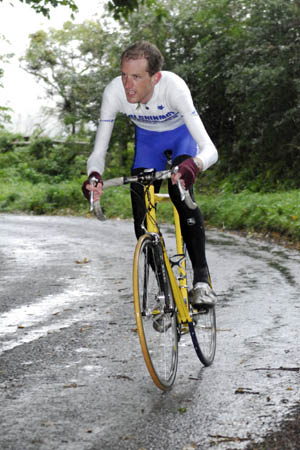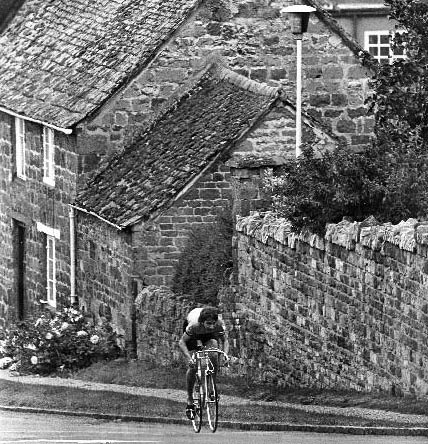I have to admit a certain masochistic love of cycling up hills. Whilst others will go out of there way to avoid hilly routes, I will often cycle along way just to be able to cycle up long hills. When it comes to sprinting in a bunch, I would be nowhere, but, my physique tends to favours climbing hills. However, no matter what your weight or natural physique you will be able to improve your climbing and avoid fearing hills.
Tips for Hill Climbing
1. Ride a Bike
I’m sorry for starting off with a sarcastic point. But, as the great Fausto Coppi advised a young cyclist ‘Go ride a bike’. If you don’t have a basic level of fitness, no amount of technique, equipment will help you climb Kirkstone pass.
2. Measure Your Effort.
Whether you are racing or just on a touring ride, the real secret of cycling up hills is to measure the hill and Judge your efforts so you don’t feel spent half way up. Start in a low gear and spin a comfortable cadence. Never kill yourself on the lower half of a climb as you can really die on the last half (no matter how fit you are). This is especially important if you are going on a long touring ride or cyclo sportive. Don’t overexert yourself to stay with the leading pack, if they are going at a faster pace than you can keep up, with reduce your effort 5%.
3. Prepare Your Ride.
If you are going on a long ride, look at a map to gain a rough idea of the height and length of the climb. If the climb is longer or steeper than you are used to start off more conservatively. If you have a long sportive, make sure you are aware of how many climbs you will face in the day.
4. Seated / Standing up.
Generally speaking you will be more efficient and go faster seated in the saddle. However, standing on the pedals gives you a greater feeling of power, it is a bit like going down to a lower gear. It depends on the length and gradient of the climb. For a long, shallow climb (like Alpine Passes), you will want to stay seated for as much as possible. Though getting out of the saddle every now and then can help break up the climb. However, for some of the short steep climbs (which are typical of Britain) you will have no choice but to get out of the saddle, especially on the steeper sections.
- Generally, I try to stay seated for as long as possible, unless the climb becomes very steep. You need to find your own routine, but generally use gears more and stand up less.
5. Open up Your Breathing.
If you are on the drops, you may feel more constricted in your breathing. Moving your hands onto the hoods enables you to open up your chest and breathe more easily. When climbing the aerodynamic advantage is less.

6. Climbing in a pack.
When standing up on the pedals, be wary that you can slow down and cause problems for the rider in front. Change gear first and try to maintain same speed. Aerodynamics are less important on a climb, but, you can still benefit from sheltering behind other riders especially on exposed climbs.
If climbing isn’t your forte move to the front of the group for the start of the climb and have confidence that you might be able to catch up the pack on a long descent.
7. Anticipate hills by drinking and eating in advance.
You want to avoid eating or drinking on a climb or just before. If doing hill intervals takes energy gels for easy assimilation.
8. Don’t Grip handlebars too tight.
A good climbing posture is to leave the hands resting on the top of the handlebars with little pressure. Also try to relax the shoulders. Only on sharp climbs will you need to use the power of your arms.
9. Don’t be Daunted by Hills.
Long climbs can exert a powerful psychological effect on the attitude of a cyclist, don’t be daunted by hills. Climb at your own pace, know your limits and just remember, everyone will be suffering as well.
10. Maintain a good Cadence.
For climbing your cadence may naturally fall. But, some people let it fall too much, when practising hills try keeping a cadence of 80rpm and see the difference. Don’t be embarrassed to get a triple cog (granny ring )or compact as this can help you maintain optimal cadence on long climbs.
See post on: Standard gears or compact gears – with listing of gear ratios
Related
- Hill Climbs
- Time saved from weight loss on a bike - the easiest way to go faster up hills!
- Thoughts on hill climbs
- How to ride a hill climb – how to race up hills


Nice tips Tejvan. Remember to bring things that are necessary only, else it’s tiring to carry a heavy while cycling.
I conquered Fargo street (33% grade!) on a unicycle at age 55!
http://www.youtube.com/watch?v=Nak8TBvykkc
Hi Chris, thanks for dropping by!
Just come across this blog, great work, going straight in my faves for sure!
On point 3, some of the online tools are excellent now for getting an idea of what hills you are about to tackle. MapMyRide, Route Toaster, Bikely – think they all give reasonable altitude data. I’ve already plotted the hills I plan on tackling this year
Tips for riding up hills…. And above all learn how to suffer and enjoy it!